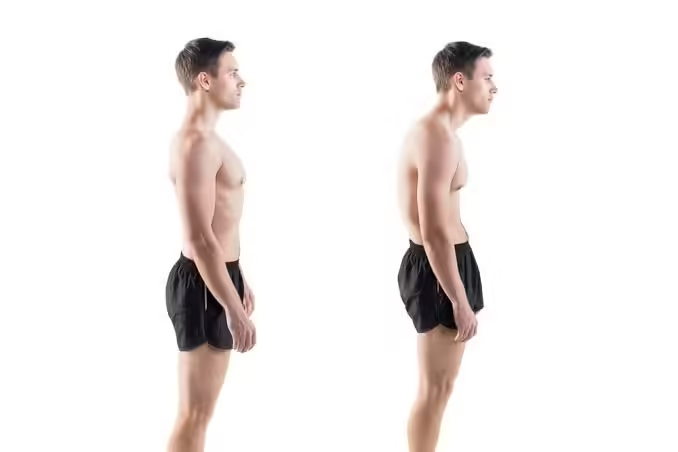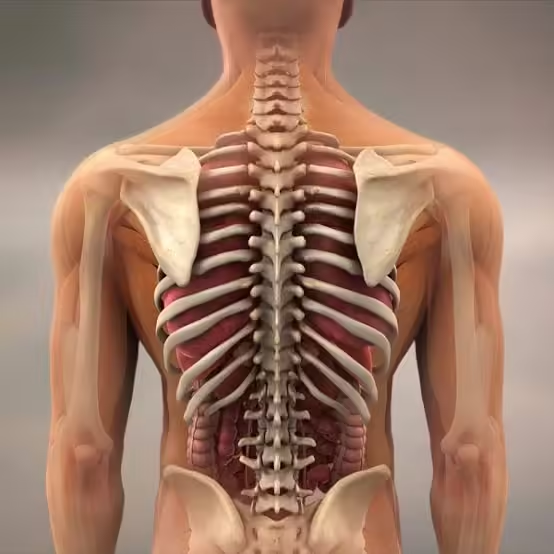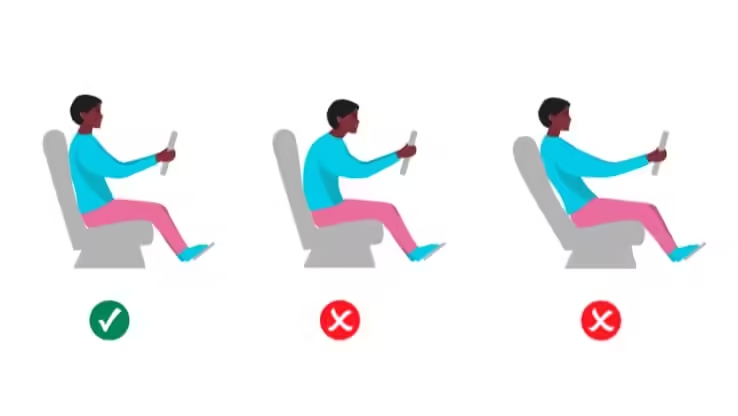Basic Techniques for Posture Enhancers
Table of Contents
Introduction
Have you ever caught yourself in a window reflection only to see you were slouching? You are one of many. Slouching and poor posture overfill our lives. Good posture, often overlooked, turns out to be an important part of our general health and fitness, from how we look aesthetically to our psychological health. In the article that follows, simple techniques to correct your posture are outlined in helping you feel great about standing up tall.

Understanding Posture
Definition and Types of Posture
Posture refers to the manner in which your body is aligned while standing, sitting, or lying. Proper posture involves conditioning the body to stand, walk, sit, and recline in ways that minimize stress on nearby muscles and ligaments. There are two types of postures: dynamic posture when in motion, and static posture when not in motion.

Common Postural Problems
Common postural problems that most people suffer include:
Forward Head Posture: The head projects in front of the line of the spine.
Rounded Shoulders: The shoulders are pulled forward. This makes the back appear hunched.
Anterior Pelvic Tilt: The pelvis is tilted forward, and the lower back appears more curved than usual.
Benefits of Good Posture
Physical Health Benefits
Good posture can actually help prevent back and neck aches, reduce the possibility of injury, and even facilitate breathing and digestion. It will allow muscles to have a simpler work cycle because of its effortlessness, thus decreasing fatigue and strain.

Mental Health Benefits
Good posture can improve your mood and increase your self-esteem. It’s associated with lower levels of stress and anxiety, enhanced concentration, and more energy.

Better Appearance
Maintain good standing and sitting posture. Good posture stretches out the appearance of stature, seems to slim down the person, and gives off a good impression of poise.
Good postures help toward better body image and better first impressions.
Self-Assessment Techniques for Checking Your Current Posture
To check your posture, stand with your back to a wall, your heels about 6 inches from the baseboard. Your head, shoulder blades, and buttocks should reach the wall and you should easily be able to slide your hand behind your lower back. If it is hard to do either of those things, you may have some postural imbalances.
Professional Posture Assessments
One could consult a physiotherapist or a chiropractor to perform a more comprehensive analysis utilizing posture grids and plumb lines in order to provide interventions specifically to highlighted areas.

Basic Principles of Good Posture
Spine Alignment
Your spine should have natural curves: cervical (a slight forward curve), thoracic (a slight backward curve), and lumbar (a slight forward curve). Good posture maintains these natural curves without exaggeration.
Role of Core Muscles
The core muscles are the abdominal, back, and pelvic muscles that maintain your spine or backbone in position. Therefore, training your core muscles will straighten your spine and thereby relieve other muscles which are under tension.

Sitting and Standing Posture
While seated, ensure your feet rest flat on the floor. Your knees should bend at 90 degrees and your back straight against the chair. When you stand, distribute your weight evenly between both feet, keep your shoulders back, and your head level.
Fundamental Exercises for Good Posture
Day to Day Practice
Aware Sitting and Standing End
Pay attention to your seating and standing. Keep your back straight and your shoulders relaxed and parallel to the floor. Avoid crossing your legs when sitting for a time.
Ergonomic workstation setup
Position your work station to foster good posture. Your computer screen should be at eye level, and your chair should provide support for the lower part of your back. Use a footrest when necessary to preserve the resting position of the feet on the floor.

Posture-Strengthening Exercises
Stretching Exercises
Strengthening through regular stretching can be very effective in alleviating tension accumulated in your muscles and improve your flexibility. Stretch the muscles on your neck, shoulders, chest, and your back with exercises such as neck stretches, chest openers, and spinal twists.

Strengthening Exercises
Strengthening exercises work on the muscles that help in good posture. Emphasize the exercises that deal with strengthening the core muscles, back, and shoulders. These exercises could be done with planks, bridges, and shoulder blade squeezes.

Tools for Posture Correction
Pillows and Cushions
You can apply lumbar support cushions along with ergonomic pillows when sitting or lying down to carry on with your daily routine with natural curves of your spine. You can support your lower back and neck using these tools.
Posture Braces and Supports
Bracing can remind you of how to keep your back straight, but that should only be a supplement to, not a replacement for, strengthening and stretching exercises.

Mindfulness and Posture
Why Mindfulness Is Important to Your Maintaining Good Posture
Being mindful of your posture is simply a way of paying attention to how you are holding your body throughout the course of the day. Check in with yourself often to make adjustments as needed.
Mindful Movement Techniques
An example of practices that focus on mindfulness and movement is Yoga and Tai Chi. It builds a sense of better body awareness that would result in better posture. One learns to move as one’s back and overall health favors.
Combining Posture Improvement into Life
Creating Reminders and Cues
Using reminders and cues for you to maintain your good posture. When to set alarms on your phones, stick notes on the desk, or use posture reminder apps to remind you to keep and check your posture.
Exercise and Routine Integration
Schedule time each day to practice stretching and strengthening exercises that help improve your posture. Try to execute these moves in daily activities.

Workplace Solutions
Ergonomic Furniture Chairs and Desks
Invest in ergonomic office furniture that supports good posture. Ergonomic chairs will support the curve in your lower back, and a sit/stand desk can be adjusted to allow you to change between sitting and standing at periods throughout the day.
Alternative Seating Options – Standing Desks
Standing over a long period of time lessens the strain of sitting. Change positions frequently enough to keep your muscles working and to avoid muscle fatigue.
Mistakes and How to Avoid Them
Overarching Back
Your lower back should not arch forward-thrusting excessively. Activate your core and keep your spine in a neutral position.

Forward Head Posture
When your head goes forward, the strain begins to occur on your neck and shoulders. Align your ears with your shoulders. Do not thrust your chin forward.
Slouching
Slouching causes extra strain on your back and muscles. Sit up straight by placing your back against the chair and keeping your feet flat on the floor.
Posture and Technology
Effect of Smartphones and Computers on Posture
Poor posture can develop when one spends much time sitting on the smartphones and computers. Common offenders include tech neck (forward head posture) and forward-rounded shoulders.
Ways of Decreasing Negative Impact of Tech on Posture
Keep your phone at your eye level. Sometimes keep standing up and move around to reduce dependency on your computer. Keep your screen and chair height to an upright posture position.
Sleep and Posture
Optimal Sleeping Positions
Sleeping on your back or side helps keep your spine in natural curvature. Do not sleep on your stomach as this will put a strain on your neck and back.
Good Mattress and Pillow
The right mattress and pillow ensure the proper alignment of your spine. You should sleep on a firm mattress using a pillow that supports your neck for you to sleep in good posture.
Lifting Techniques
Proper Lifting Technique: Protect your back by bending at your hips and knees. Keep the object next to your body. Never lift with your back, only use your legs.
Driving Posture
Adjust your car seat so that there is good support for the back; your knees should be slightly bent. Use a lumbar support cushion when you need one. If you are going on long car trips, remember to stop every now and then to stretch your body.

Posture During Exercise
You should have a proper stance while exercising so that you will not get injured and at the same time attain maximum efficiency. Your core muscles must be triggered while your joints are not stretched out overly.
Role of Nutrition in Posture
Role of Calcium and Vitamin D
Calcium and Vitamin D are needed by your bones; therefore, ensure that you get enough of these nutrients so that you may have a strong backbone and maintain good posture.

Hydration and Musculoskeletal Health
It is essential to keep your muscles hydrated for proper muscle functioning and flexibility. Therefore, you should drink enough water to ensure that your muscles are well-hydrated and acting normally.

Conclusion
Practices such as those described here will improve your posture and health, appearance, and overall well-being. Applying such simple techniques will make you stand taller and feel more comfortable; you will minimize the incidence of pain or injury resulting from poor posture. Good posture is a habit: do not get discouraged with yourself and keep on practicing.
FAQs
How long will it take me to improve my posture?
It takes a week, months, or even years to improve your posture depending on the severity of the posture issues and how often you are consistent with your exercises and daily habits.
Is bad posture the cause of back pain?
Poor posture actually causes back pain by placing excess strain on muscles and spines. Maintaining proper posture can alleviate and help prevent back pain.
Are posture braces effective?
This article, therefore, comes to resolve any unclear assumption between people thinking that posture braces are effective for correcting one’s posture and if they really help a person. Do Posture Braces Really Work? Do posture braces work to correct posture? Posture braces can certainly be helpful as a temporary aid or reminder to use good posture. Still, never count on them entirely, and always use them hand in hand with exercises to develop and stretch your muscles.
How does posture affect breathing?
Good posture allows the lungs to extend absolutely, so your breathing is improved. Poor posture can limit lung capacity and means the breathing is less efficient.
Can children benefit from posture improvement techniques?
Yes, posture-improvement techniques are helpful for children, because early beginners in good posture habits will lead to strong, healthy bodies developed by proper sitting, standing, and movement patterns.



